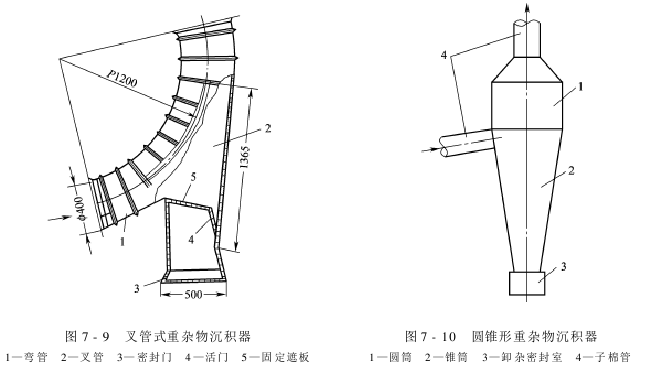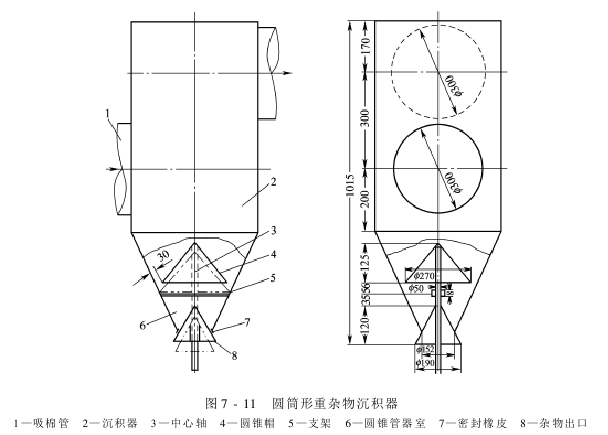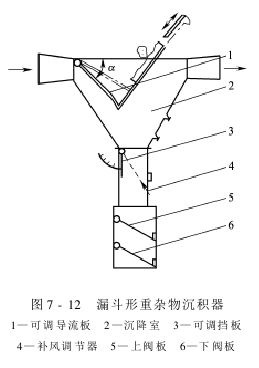Cotton management, cotton cleaning machinery
Cotton sorting and sub-cotton cleaning are necessary links for efficient cotton gins. It is no longer the crude equipment of the past that relied on one or several spiked rollers and a mesh bottom to roughly clean the impurities attached to the sub-cotton. Instead, it uses several types of cleaning and separation equipment for efficient cleaning. The perfect cleaning system of cotton lint can not only clean up the external impurities mixed in cotton cotton, but also effectively remove dead cotton, insect-eaten cotton, infertile children, etc. in cotton cotton, thereby reducing yellow dyeing, dyeing, and staining in the color of cotton lint. The purpose of improving the overall maturity and ginning quality of lint is to reduce pollution and lint, and to reduce the impurity content rate, which lays the foundation for improving the grade of lint.
There are many types of cotton cleaning machinery with different performances. Some machines can only remove a certain type of impurities, while others can comprehensively clean several types of impurities. Therefore, it is important to understand the various types of cleaning machinery in order to use them correctly.
Seed cotton cleaning machinery can be divided into heavy debris depositors, suction cotton separators, seed cotton cleaning machines and other types according to their functions.
(1) Heavy debris depositor
Heavy debris depositor is also called heavy debris separator or heavy debris cleaning machine. The principle is to use the airflow to make sharp turns in the pipe or the sudden expansion of the pipe area. The airflow speed decreases and the heavy debris in the sub-cotton is heavier than the sub-cotton. Therefore, the heavy debris can only relax along the outside of the bend or fall downward. The density The lighter cotton is suspended and carried away by the air flow. The heavy debris depositor has a good removal effect on large and heavy debris, but it is difficult to remove light and fine impurities.
The cleaning efficiency of the heavy debris depositor is the proportion of heavy debris separated. The factors that affect it are:
(1) The uniformity of cotton feeding;
(2) The distance of the suction stroke;
(3) The installation and adjustment of the equipment.
It is easy to make a mistake in the cotton inlet and cotton outlet of the depositor, so you should pay more attention during installation. Under normal circumstances, the sedimentator should be adjusted according to the conditions of impurity removal and air supply.
1. Fork tube type heavy debris depositor
The structure of the fork tube type heavy debris depositor is shown in Figure 7-9. It is installed under the bend of the suction pipe that turns from horizontal to vertical upward. It is mainly composed of fork tube and impurity sealing parts.
The fork tube can have a circular cross-section or a square cross-section, where impurities and cotton are separated. The connection between the fork tube and the outer side of the elbow must be completely smooth, and the angle between the outside of the fork tube and the vertical line is approximately 20°.
The impurity discharge sealing mechanism consists of a fixed shutter, a valve and a sealing door.
When the sub-cotton follows the airflow through the 90° elbow that turns horizontally to vertically upward, the heavy debris in the sub-cotton has a greater mass than the sub-cotton, so the inertial centrifugal force generated when relaxing along the elbow is also greater than that of the sub-cotton. And along the outside of the bend, it hits the inclined wall on the outside of the fork tube.
In addition, as the flow cross-sectional area expands and the airflow speed decreases, only the cotton can be suspended and carried away by the airflow. Heavy debris can only fall downwards on the valve, and then slide from the valve into the sealed chamber.
2. Conical heavy debris depositor
The structure of the conical heavy debris depositor is shown in Figure 7-10. It is also a heavy debris depositor combined with a bent pipe. It is mainly composed of a cylinder, It consists of a cone and a sealing chamber for discharging impurities.

Cylinder That is, the height and diameter of the heavy debris settling chamber, the height and diameter of the cylinder are the main structural parameters that affect the impurity removal efficiency and waste loss of the heavy debris depositor. The diameter of the cylinder is determined based on the principle that the airflow speed in the settling chamber can suspend the cotton wool and cause the special, heavy and hard debris to fall. It is generally required that the airflow speed in the settling chamber is controlled at about 12m/s. When the suction volume of sub-cotton is 2.5~5.5t/h, the cylinder diameter is 350~450mm. The height of the cylinder is determined based on the time required for the separation process of heavy debris and sub-cotton. The height of the cylinder is generally around 300mm.
The cone is an auxiliary settling chamber for heavy debris and a channel for impurities to fall. The heavy debris separated from the cotton falls into the impurity discharge sealed chamber through the cone.
The function of the impurity discharge sealed chamber is to discharge impurities out of the heavy debris depositor and block the inhalation of outside air. Usually, the door of the sealed chamber is opened manually at regular intervals to remove debris.
The cotton inlet end of the cotton tube is connected to the upper end of the cone in a horizontal or slightly inclined shape. The cotton outlet end is vertically connected to the top surface of the cylinder through an gradually expanding tube. When the cotton enters the heavy debris depositor with the air flow, the inertia of the heavy debris in the cotton is greater than that of the cotton, and it continues to relax in the original direction until it hits the side walls of the cylinder and cone. Coupled with the sudden expansion of the flow cross-sectional area of the settling chamber, the airflow speed drops significantly. Only the cotton can be suspended and taken away, and the heavy debris can only fall downwards.
3. Cylindrical heavy debris depositor
The cylindrical heavy debris depositor is shown in Figure 7-11. It is installed on the horizontal pipe section of the sub-cotton pipe and is mainly composed of a cylinder, an impurity discharge seal, etc.

Cylinder The working principle of the cone-shaped heavy debris depositor and the conical heavy debris depositor is the same. When the airflow sucks the cotton, the cotton enters the depositor from the cotton suction pipe. Due to heavyAs the volume inside the container expands and the wind speed decreases, heavy debris falls onto the movable conical cap, while the cotton is sucked away by the airflow. When the ventilation valve of the three-pipe cotton box is opened, the airflow is interrupted and the negative pressure in the sedimentator Disappear, the movable conical cap falls, and the impurities are discharged along the debris outlet. During ventilation, negative pressure is generated in the depositor, and the movable conical cap is sucked up again, sealing the lower part of the depositor, and the depositor continues to work. If you want to install the cylindrical heavy debris depositor on a continuously working horizontal pipeline, you can change the automatic debris removal mechanism at the bottom to a manual debris removal or choke valve debris removal mechanism.
The several heavy debris depositors introduced above have the advantages of simple structure, no rotating parts, easy operation and maintenance, etc., and are generally made by the ginning factory. However, their biggest disadvantage is that they cannot be adjusted accordingly with the changes in the properties and working conditions of the cotton. When the properties and working conditions of the cotton are different from those assumed during the design, the use effect will not be satisfactory. Low cleaning efficiency means more waste is lost.
4. Funnel-shaped heavy debris depositor
The structure of the funnel-shaped heavy debris depositor is shown in Figure 7-12. It is installed on the horizontal pipe section of the suction pipe and is mainly composed of a funnel-shaped settling chamber, It is composed of adjustment parts and impurity removal sealing parts.

Its The centers of the cotton inlet and outlet are at the same height and are rectangles with the same size. The width and height of the funnel-shaped settling chamber are the main structural parameters that affect the impurity removal efficiency of the heavy debris depositor and the loss of waste.
The adjustment components include adjustable deflectors and corrective airflow regulators. The adjustable deflector is installed in the settling chamber. It is a steel plate that can change the inclination angle. Changing the angle between it and the upper cover of the settling chamber can change the time when cotton and heavy debris go around the adjustable deflector. The radius of curvature and leisure direction.
Under normal circumstances, the angle between the guide plate and the upper cover is appropriate, so that the cotton entering the depositor can smoothly bypass the guide plate, pass through the settling chamber, and leave the cotton outlet. Due to the large inertia of heavy debris such as stones, it is difficult to change the original leisure direction when passing through the deflector. In addition, the airflow speed in the settling chamber is significantly reduced, and they fall into the sealed chamber of the debris removal chamber under the action of gravity. The angle between the deflector and the upper cover should not be too large or too small, otherwise it will cause waste loss and increase the resistance of the cotton suction air net or reduce the cleaning efficiency.
The adjustment range of this included angle is 33°~60°. The corrective airflow regulator includes a make-up air regulator and an adjustable baffle. The function of the corrective airflow regulator is to make a small amount of cotton that falls with heavy debris return to the cotton flow using the rising airflow formed by the supplemental air to reduce waste loss. The air supply volume of the air supply port should not be too large, so as not to affect the external suction effect and increase power consumption. The inclination of the adjustable baffle cannot affect the fall of heavy debris. The small distance between it and the side wall of the adjustable air supply port should be greater than the size of the heavy debris, generally about 130mm.
The unloading sealing parts include heavy-duty boxes, upper valve plates, lower valve plates, reduction motors, transmission mechanisms (cams, upper and lower weights, upper and lower striking rods) and other components. Its function is to drive the transmission mechanism through the reduction motor, so that the upper and lower valve plates can open and close intermittently and asynchronously, so that they can remove heavy debris and block the inflow of outside air. The reduction motor does not need to run continuously for a long time and can be turned on regularly for 30 to 60 seconds according to the impurity content of the cotton.
The cotton containing impurities enters the depositor from the cotton inlet with the air flow. Due to the different weights and different suspension speeds of the cotton and heavy debris, the two have different trajectories when they go around the adjustable deflector. The sub-cotton is carried away by the air flow and enters the sub-cotton pipe through the cotton outlet, while the heavy debris falls into the heavy debris box, thus realizing the separation of heavy debris and sub-cotton.
5. Turbine-type heavy-duty separator
Turbine-type heavy-duty separator is a unique technology of American Rams, as shown in Figure 7-13. It uses a pneumatic double-wing impurity unloading machine to separate impurities, which can be activated intermittently to let the impurities fall down and prevent the surrounding air from being sucked into the system. The double-wing design also reduces the chance of impurities being remixed into the cotton or airflow. It has two important functions.

(1 ) This system can remove impurities and separate cotton wool in the drying system before entering the pre-cleaning machine.
(2) The heavy-duty separator is used in conjunction with the negative pressure pull-through tower dryer to provide a hot air injection point for the second drying step. 2/3 of the air flow in the tunnel dryer is used to lift the cotton from the cotton mold feeder, and the remaining 1/3 of the hot air flow is used at the bottom of the turbine-type heavy-duty separator to separate the cotton from the cotton mold through two injection points. Air flow is injected into the sub-cotton.
AAAVSGREHTRY45







